Discover 8 hidden attractions, cool sights, and unusual things to do in Big Bend National Park (United States). Don't miss out on these must-see attractions: Emory Peak, Daniels Farm House, and Hot Springs. Also, be sure to include Mariscal Mine in your itinerary.
Below, you can find the list of the most amazing places you should visit in Big Bend National Park (Texas).
Table of Contents
Emory Peak
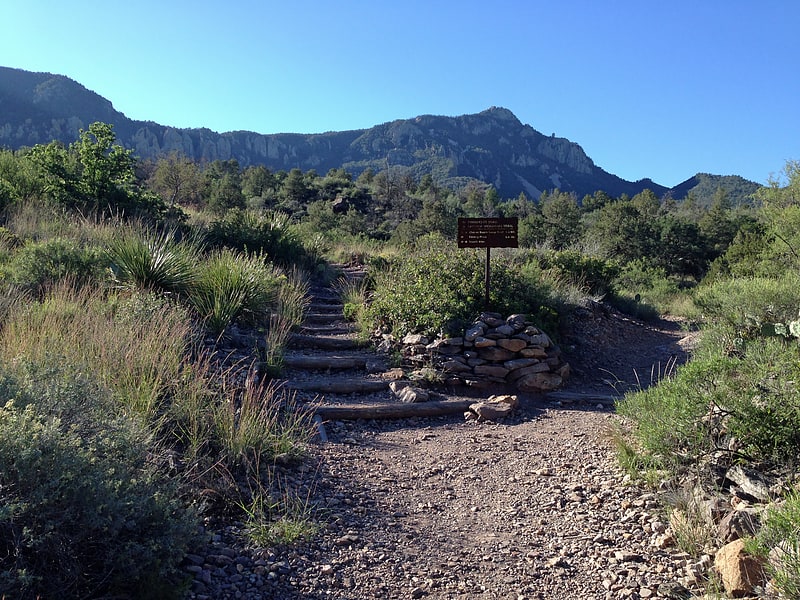
Peak in Texas. Emory Peak, located in Big Bend National Park, is the highest peak in the Chisos Mountains and the highest in Brewster County. The peak is named for William H. Emory, the chief surveyor of the U.S. Boundary Survey team of 1852. From the Chisos Basin the peak appears to be a minor ridge, while the summit of Casa Grande, one mile closer, seems to be much taller. From the west, Emory Peak is clearly visible as a point slightly higher than most of the mountain range.
The peak can be reached by a moderate hike on a well-marked path across steep rocky terrain with an elevation gain of approximately 2,500 feet (760 m). The Emory Peak Trail is about 1.5 miles (2.4 km) long. The trail is reached by climbing the Pinnacles Trail 3.5 miles (5.6 km) from the Chisos Basin trailhead. Once at the base there is a semi-technical rock scramble to navigate before reaching the summit. No gear is needed for this climb although hikers should take great care. High-desert flora and fauna including alligator juniper (Juniperus deppeana), pinyon pine (Pinus cembroides), mule deer (Odocoileus hemionus), prickly pear cacti (Opuntia spp.), Mexican jay (Aphelocoma wollweberi), sotol (Dasylirion leiophyllum), and Texas madrone (Arbutus xalapensis) may be seen along the trail. There are signs warning of mountain lions and bears.
The view from the top takes in most of the northern section of the park and a good portion of the Chisos range to the south. One surprise at the top, during the right season, is the population of lady bugs on the summit. There are solar panels, radio transmission equipment, and antennae at the top.[1]
Daniels Farm House
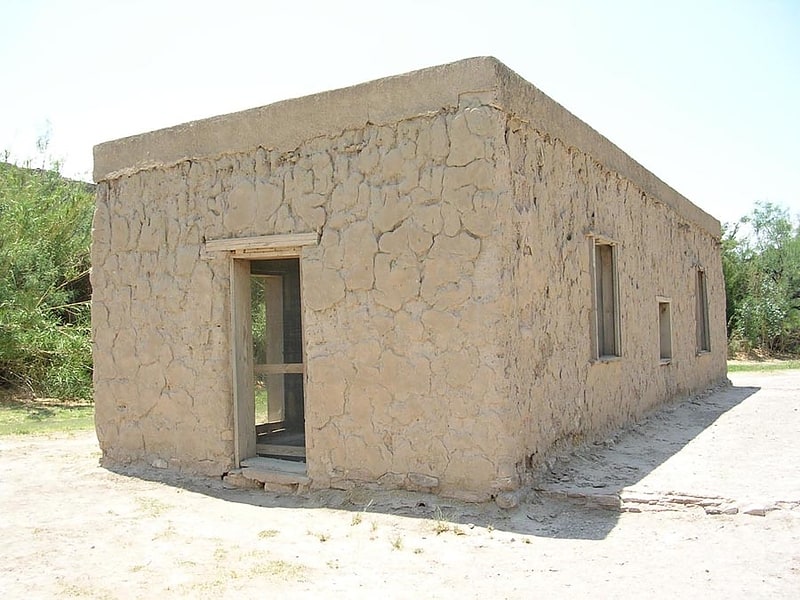
The Daniels Farm House represents one of the last vestiges of West Texas pioneer farming in Big Bend National Park, Texas. Most of the small-scale farms in the Big Bend area quickly fell into ruin after the park was established in 1944. Larger-scale ranch structures survived in greater numbers, but the small-scale irrigated bottomland farms have not. The farm is located next to the Rio Grande.[2]
Hot Springs
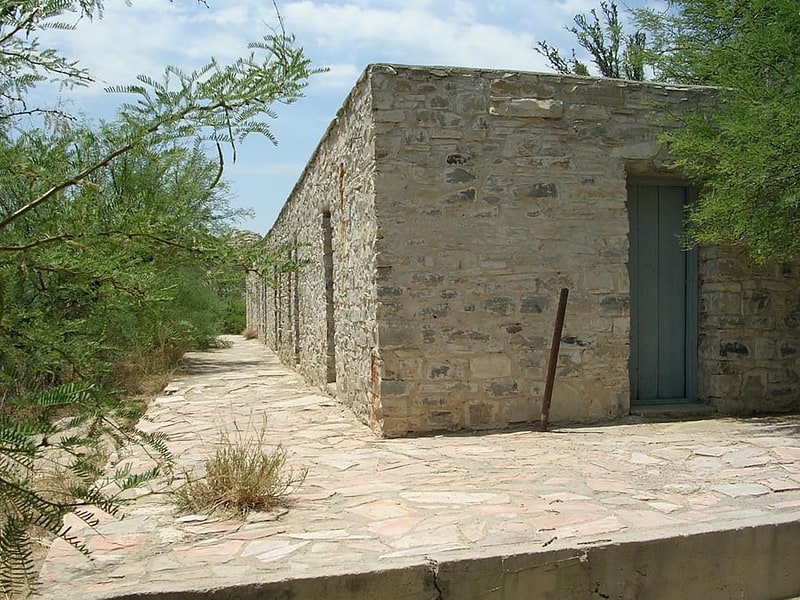
Hot Springs, also known as Boquillas Hot Springs, and Langford Hot Springs is a former thermal spring resort in what is now Big Bend National Park in Texas. Hot Springs was placed on the National Register of Historic Places in 1974.[3]
Mariscal Mine

Historical place in Big Bend National Park, Texas. The Mariscal Mine, also known as the Lindsey Mine and the Ellis Mine, was a source of cinnabar ore that was refined at the Texas site into mercury. The mine is located in what is now Big Bend National Park. The mine produced a total of 1400 flasks of mercury, each weighing 76 pounds, accounting for almost a quarter of the mercury production in the United States between 1900 and 1943.[4]
Luna Jacal

Historical landmark in Big Bend National Park, Texas. The Luna Jacal or Luna's Jacal was the residence of Gilberto Luna, a Mexican pioneer farmer in the area of Texas that would become Big Bend National Park. The jacal, an indigenous Tejano dwelling suited to the desert environment, was built about 1890 with a low sandstone and limestone wall about 4 feet, with forked poles set upright into the walls, supporting roof poles. The house backs up to a large boulder. A heavier line of poles extends the length of the jacal. The roof was made of ocotillo branches weighted down with earth and stones, presently replaced with an inappropriate soil-cement roof. Luna raised a large family at the jacal, peacefully coexisting with otherwise hostile Comanche who used the Alamo Creek area as a war trail. Luna died there in 1947 at age 108 or 109.
Luna's jacal was placed on the National Register of Historic Places in November 8, 1974. It was restored in 1971 and again stabilized in 1983.[5]
Chisos Mountains
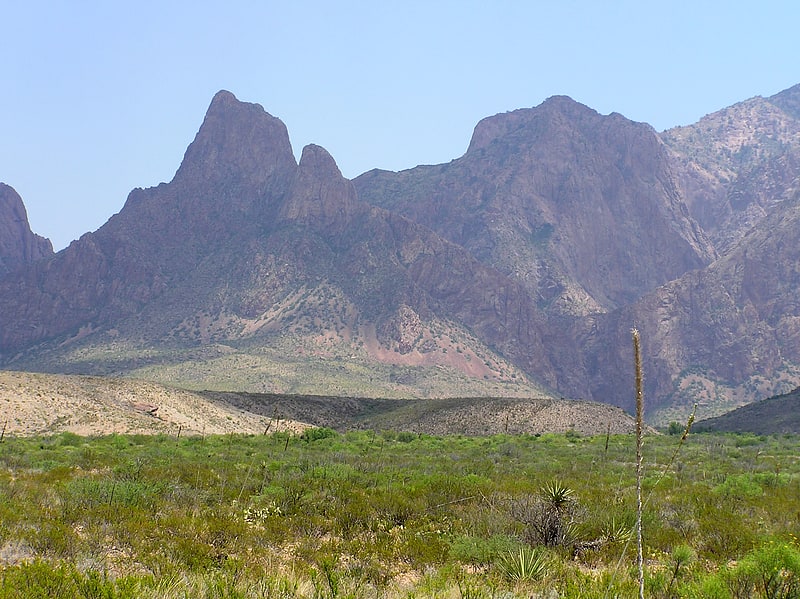
Mountain range in Texas. The Chisos Mountains, also known as the Chisos, are a mountain range located in the Big Bend area of the Trans-Pecos region of Texas, United States. The mountain system covers 40 square miles and is contained entirely within the boundaries of Big Bend National Park, making it the only mountain range in the United States fully contained within a national park. The Chisos Mountains are the southernmost mountain range in the mainland United States.
The Chisos Mountains were created by volcanic activity during the Eocene Epoch 35-44 million years ago.
The highest point in the Chisos Mountain range is Emory Peak at 7,825 ft (2,385 m) above sea level.[6]
Boquillas Port of Entry
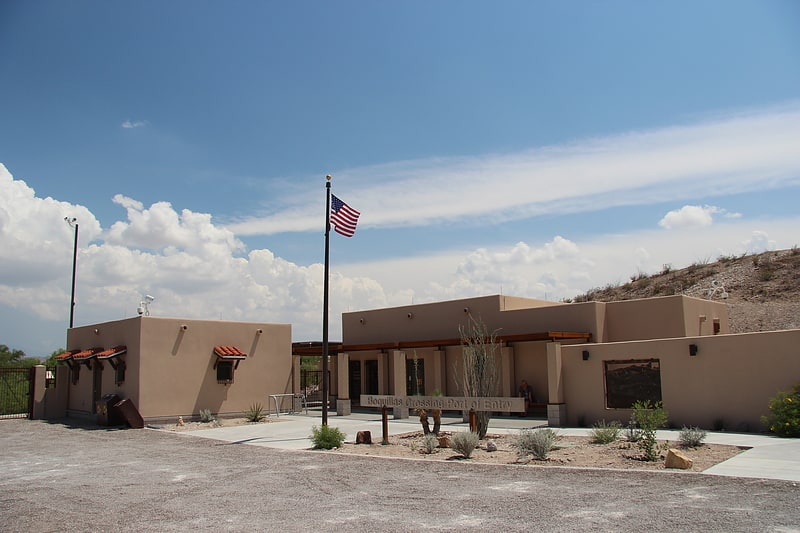
The Boquillas Port of Entry is a port of entry into the United States from the Mexican town of Boquillas del Carmen to Big Bend National Park. Having opened in April 2013, it is a port of entry that is unstaffed by Customs and Border Protection agents, but at least one National Park Service employee is present while the port of entry is open. Persons entering from Mexico must report to the video inspection kiosks. Crossing of the Rio Grande may be accomplished by foot, rowboat or burro. Previously, the Boquillas Port of Entry had been an informal border crossing for several decades, but was closed in May 2002. It is the only unstaffed legal border crossing on the US-Mexico border and one of only four that allow only pedestrian traffic.[7]
Homer Wilson Ranch
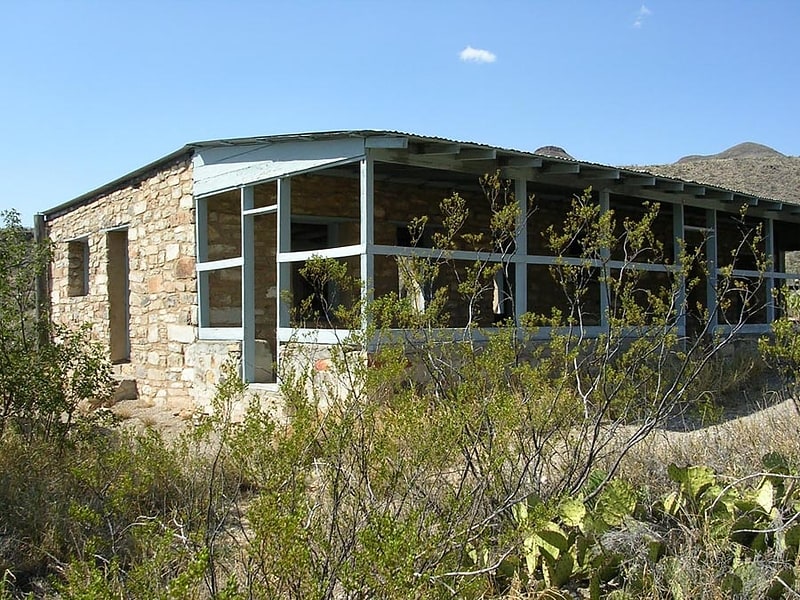
Historical place in Big Bend National Park, Texas. The Homer Wilson Ranch, also known as the Blue Creek Ranch, was one of the largest ranches in the early twentieth century in what would become Big Bend National Park in the U.S. state of Texas. The ranch was established by Homer Wilson in 1929 at Oak Springs to the west of the Chisos Mountains. Ultimately comprising 44 sections of land, amounting to more than 28,000 acres, the Oak Canyon-Blue Creek Ranch was acquired by the State of Texas in 1942 for incorporation into the new park. A large portion of the ranch comprised portions of the old G4 Ranch, established by John and Clarence Gano in the 1880s. Wilson's ranch focused on sheep and goats, the first such large operation in the Big Bend area. Wilson continued to live at the ranch until his death in 1943; his family moved from the ranch the next year. Wilson, born in Del Rio, Texas in 1892, had studied petroleum engineering at the Missouri School of Mines and was a World War I veteran. The ranch, with the headquarters at Oak Springs and its operational center at Blue Creek, was one of the largest in Texas, and the most significant ranch in Big Bend.
The Blue Creek residence measures about 24 feet (7.3 m) by 60 feet (18 m) with a 16-foot (4.9 m) by 60-foot (18 m) screened porch on the south side of the house. The single-story residence comprised two bedrooms, a living room and a kitchen, with a large central fireplace. The house features a double roof, the inner layer a traditional reed roof of the type locally used, with a sheet metal roof above. Another building housed ranch help. The structures were abandoned when the Wilsons moved out.
The Blue Creek area of the Wilson ranch was placed on the National Register of Historic Places on April 14, 1975.[8]